by Paul Braterman
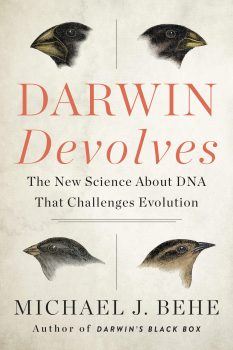 “[T]here is in fact nothing that can alleviate that fatal flaw in Darwinism” says Professor Behe, stating the book’s central claim in the mendaciously mislabelled creationist web journal Evolution News.
“[T]here is in fact nothing that can alleviate that fatal flaw in Darwinism” says Professor Behe, stating the book’s central claim in the mendaciously mislabelled creationist web journal Evolution News.
The claim is clickbait, the book title misleading, and the argument long since rebutted. The historical roots of the argument show the close links between what now calls itself Intelligent Design, and biblically inspired “creation science”. The issues are important because the Intelligent Design movement gives a veneer of intellectual respectability to the denial of scientific reality. Behe is a founder member and senior fellow of the Seattle-based Discovery Institute (DI), which hails him as a revolutionary. The DI promotes Intelligent Design, and his colleagues there have greeted his book with 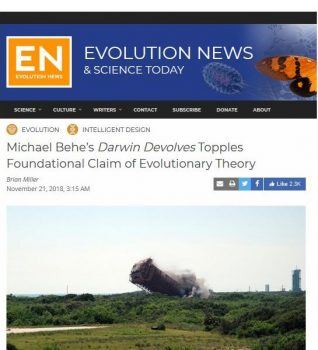 rapture, claiming that “Michael Behe’s Darwin Devolves Topples Foundational Claim of Evolutionary Theory” and that “Anyone interested in knowing the truth about the design/evolution debate will find Darwin Devolves a must read.”
rapture, claiming that “Michael Behe’s Darwin Devolves Topples Foundational Claim of Evolutionary Theory” and that “Anyone interested in knowing the truth about the design/evolution debate will find Darwin Devolves a must read.”
I would much rather have been able to ignore this book. Unfortunately, I cannot do so because I know that it will receive massive publicity from the “Darwin was wrong” industry, providing as it does a figleaf of intellectual respectability to the anti-scientific creationism espoused by millions of people worldwide, including the Vice President of the United States.
 I wonder whether Behe’s most vociferous supporters actually understand his position. Unlike them, he accepts the plain facts of evolution, including the mutability of species, the evolution of humans from non-human primates, the common ancestry of different kinds of living thing, and evolution in progress all around us. However, his repeated references to Darwin and Darwinism may help conceal these facts from the casual observer.
I wonder whether Behe’s most vociferous supporters actually understand his position. Unlike them, he accepts the plain facts of evolution, including the mutability of species, the evolution of humans from non-human primates, the common ancestry of different kinds of living thing, and evolution in progress all around us. However, his repeated references to Darwin and Darwinism may help conceal these facts from the casual observer.
To most people, in most contexts, “Darwinism” is shorthand for the entire body of evolution science. Here, however, the reference is much more restricted. “Darwinism” is being used in something close to its correct technical sense, i.e. the emergence of biological novelty by the action of selection on mutations [1]. Behe’s disagreement with the established science is not about what happens, but about how it happens. More precisely, he is denying the possibility that significant novelty could be generated by such means without the creative intervention of a designer. Unfortunately, he does not tell us how the design then comes to be expressed in material reality.
 The polar bear is the star of Behe’s book. It is a magnificent example of evolution in action, having diverged from its sister species, the brown bear, less than half a million years ago and in that interval modifying its colour, body shape and size, metabolism, and habits to cope with life in the High Arctic. We can now read the history of these changes in its genes, and as you would expect they include numerous innovations. A minority of the changes correspond to loss of function, including most obviously loss of pigmentation, yet by extreme cherry picking Behe presents the loss of function as dominant. I return to the case of the polar bear at the end of this article, but first we need to place what seems like a minor technical dispute in its historical context.
The polar bear is the star of Behe’s book. It is a magnificent example of evolution in action, having diverged from its sister species, the brown bear, less than half a million years ago and in that interval modifying its colour, body shape and size, metabolism, and habits to cope with life in the High Arctic. We can now read the history of these changes in its genes, and as you would expect they include numerous innovations. A minority of the changes correspond to loss of function, including most obviously loss of pigmentation, yet by extreme cherry picking Behe presents the loss of function as dominant. I return to the case of the polar bear at the end of this article, but first we need to place what seems like a minor technical dispute in its historical context.
This context explains why Behe’s work attracts the attention that it does. The basic ideas are not original. The term “devolution”, in the sense that Behe uses it, has been around for a while. It describes the familiar fact that evolution does sometimes leads to loss of function, and the word used in this sense even has a 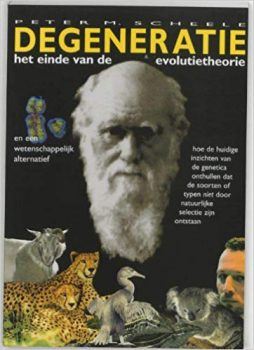 Wikipedia entry. Behe is not the first to claim that devolution, in this sense, is the dominant mode through which natural selection operates; the same idea was independently expressed by Peter Scheele in his 1997 book, “Degeneratie, het einde van de evolutietheorie” (Degeneration, the end of the theory of evolution) [2]. This attracted considerable attention in the Netherlands, which has its own evolution denial movement.
Wikipedia entry. Behe is not the first to claim that devolution, in this sense, is the dominant mode through which natural selection operates; the same idea was independently expressed by Peter Scheele in his 1997 book, “Degeneratie, het einde van de evolutietheorie” (Degeneration, the end of the theory of evolution) [2]. This attracted considerable attention in the Netherlands, which has its own evolution denial movement.
Intelligent Design is a reworking of theological arguments dating back to Aquinas or earlier, and the appealed to irreducible complexity in support of these goes back more than three centuries. To quote John Wilkins, Of the Principles and Duties of Natural Religion, London, 1675, text available here:
Now to imagine, that all these things, according to their several kinds, could be brought into this regular frame and order, to which such an infinite number of Intentions are required, without the contrivance of some wise Agent, must needs be irrational in the highest degree… Now I appeal unto any considering man, unto what cause all this exactness and regularity can be reasonably ascribed, Whether to Blind Chance, or to Blind Necessity, or to the conduct of some Wise Intelligent Being.
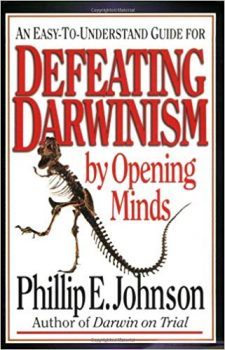 The twentieth century Intelligent Design movement derives its inspiration from the philosophical writings of Alvin Plantinga, William Lane Craig, and most especially the lawyer Phillip E. Johnson, instrumental in the 1996 founding of the Seattle-based Discovery Institute’s Center for Science and Culture. Johnson’s 1997 Defeating Darwinism by Opening Minds picks up on Behe’s 1996 Darwin’s Black Box, which already contains, fully developed and named, the concepts of Intelligent Design and irreducible complexity. Johnson also lays out the crucial claim, of which Behe’s work since 1996 is an attempted justification, that “random mutation is not an information creator and that the Darwinian mechanism is therefore irrelevant to
The twentieth century Intelligent Design movement derives its inspiration from the philosophical writings of Alvin Plantinga, William Lane Craig, and most especially the lawyer Phillip E. Johnson, instrumental in the 1996 founding of the Seattle-based Discovery Institute’s Center for Science and Culture. Johnson’s 1997 Defeating Darwinism by Opening Minds picks up on Behe’s 1996 Darwin’s Black Box, which already contains, fully developed and named, the concepts of Intelligent Design and irreducible complexity. Johnson also lays out the crucial claim, of which Behe’s work since 1996 is an attempted justification, that “random mutation is not an information creator and that the Darwinian mechanism is therefore irrelevant to 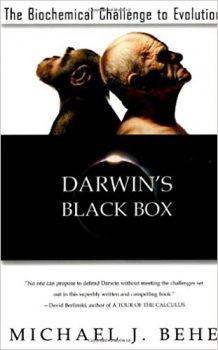 the real problem of biological creation.” Behe is himself is a founder member and Senior Fellow of the Center. He is also a Professor at Lehigh University, where his colleagues in the Biology Department have issued a statement dissociating themselves from his views.
the real problem of biological creation.” Behe is himself is a founder member and Senior Fellow of the Center. He is also a Professor at Lehigh University, where his colleagues in the Biology Department have issued a statement dissociating themselves from his views.
Note, by the way, the endless references to Darwin, as if we had learnt nothing since 1859. I have commented on this before.
I would also mention in passing that the Discovery Institute is committed to climate change denial, and has explicitly accused climate scientists of conspiracy to deceive and defraud, comparable to the fraud of which they implicitly accuse evolution scientists.
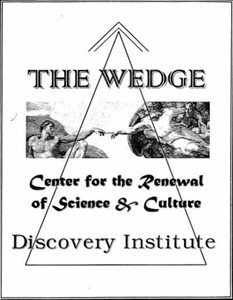 The goals of the Center are clearly laid out in the Wedge Document (see here and references therein). They include “To defeat scientific materialism and its destructive moral, cultural and political legacies” and “To replace materialistic explanations with the theistic understanding that nature and human beings are created by God.” Despite this, Intelligent Design advocates maintain that what they are proposing is not a religious, but a scientific theory. In order to do this, they need to show that “the Darwinian mechanism” is scientifically inadequate, so as to make room for their own alternative science, whatever that may be (and so far, either they don’t know or they’re not telling).
The goals of the Center are clearly laid out in the Wedge Document (see here and references therein). They include “To defeat scientific materialism and its destructive moral, cultural and political legacies” and “To replace materialistic explanations with the theistic understanding that nature and human beings are created by God.” Despite this, Intelligent Design advocates maintain that what they are proposing is not a religious, but a scientific theory. In order to do this, they need to show that “the Darwinian mechanism” is scientifically inadequate, so as to make room for their own alternative science, whatever that may be (and so far, either they don’t know or they’re not telling).
“The Darwinian mechanism” has indeed been the guiding principle of biology for around a century. For this principle to operate, it is not necessary that random mutation on its own should generate significant information. All that is necessary is that the process of mutation be followed by a process of selection. Here it does not matter whether the selection is imposed by an intelligent agent (such as a cattle breeder) or by the competition for resources and breeding opportunities. Mutation creates while selection winnows [3]. The entire Intelligent Design movement is based on a refusal to understand this, and Professor Behe’s career for the past twenty five years could be described as the search for new ways of failing to understand.
More specifically, Behe does not understand how the natural processes of mutation and selection could give rise to structures that he describes as irreducibly complex. He enormously overestimates the time required for a change that requires more than one mutation. And in a 2010 article he asserted, in the face of the evidence, that natural processes can only destroy genetic function, not create it, a claim that is central to the present book. I reviewed the 2010 article when it first appeared.  His assertion was wrong then, and with a decade of further research into genetics behind us it is even more plainly wrong now.
His assertion was wrong then, and with a decade of further research into genetics behind us it is even more plainly wrong now.
I consider these three points in turn, before discussing the experimental evidence that completes the destruction of Behe’s entire thesis, which I shall do using examples of Behe’s own choosing.
In Darwin’s Black Box (1996), Behe illustrates the concept of irreducible complexity by reference to a mousetrap. This, he argues, will not perform its function unless all the parts are already in place, and therefore could not have arisen through the Darwinian process of step-by-step evolution.
Ken Miller, biology professor at Brown University and highly esteemed textbook writer, takes this argument apart. Firstly, a mousetrap with missing components would still work, although not as well. Secondly, and more importantly, the mousetrap can be assembled out of components that originally arose as to parts of other systems; as a tiepin or keychain or doorknocker or paperweight.
Miller is illustrating the widespread biological phenomenon of exaptation, the process whereby a feature originally evolved for one purpose is co-opted for another. For example, the small bones inside the mammalian ear can be traced back to an ancestral reptile-like jaw, and it is still the case that snakes pick up sound through their jawbones. The curved asymmetric flight feathers of a bird could only function as they do as the result of an assemblage of features, but can now be traced back to the primitive feathers of dinosaurs, which functioned in much the same way as the fur of present-day mammals. One striking example of exaptation is the vertebrate forelimb, where additional features have been grafted on to the same basic structure, completely altering its use. Compare, for example, a bear’s paw, a human hand, and a bird’s wing. Behe’s supporters may attempt to draw some comfort from the fact that many of these changes involve loss or modification of original function, but they would be wrong to do so, since each loss of function has been associated with a more than compensating gain.
Now for Behe’s second argument, that processes requiring two separate mutations are extremely unlikely. Such an argument has got a degree of face plausibility, but in reality pathways involving more than one mutation are distressingly common in a large population of replicating cells. I say distressingly, because many cancers require two or even more mutations. I cannot imagine that Behe really regards every case of cancer as an example of the designer’s intervention, but that is what his reasoning requires.
Behe’s third point, from which this book takes its title, is his claim that the vast majority of mutations actually reduce the functioning of genes, and that this somehow invalidates what he calls Darwinism. To quote his response to a predictably hostile review in Science,
[T]he reviewers… have absolutely no response to the very central argument of the book… The First Rule of Adaptive Evolution: Break or blunt any gene whose loss would increase the number of offspring. The rule summarizes the fact that the overwhelming tendency of random mutation is to degrade genes, and that very often is helpful. Thus natural selection itself acts as a powerful de-volutionary force, increasing helpful broken and degraded genes in the population.
And they had no response! That’s because there is in fact nothing that can alleviate that fatal flaw in Darwinism. [Emphases in original.]
The reasoning here is extraordinary. Behe starts with the banal observation that when breaking a gene would increase fitness, such breaking should be expected. From there he slides into the highly questionable claims that “the overwhelming tendency of random mutation is to degrade genes” [3] (emphasis added), and a further leap takes him to the conclusion that the natural processs of mutation and selection cannot create significant function. As Dennis Venema puts it at Biologos, a site dedicated to exploring evolution science and maintaining its compatibility with religion,
His argument has always struck me as akin to presenting countless examples of erosion, avoiding all discussion of tectonic uplift, volcanic action, etc – and then claiming that mountains must be the result of supernatural processes.
Or as Richard Lenski, whose 65,000-generation experiment into the evolution of bacteria has taught us so much, and who was one of the reviewers for Science, puts it on his own splendid blog Telliamed Revisited,
But when it comes to the power of natural selection, what is most frequent versus most important can be very different things. [Emphases in original.]
If you are puzzled by Behe’s entire chain of reasoning, so you should be. Loss of function, when loss of function is adaptive, is exactly what Darwinian science predicts. Many such cases are known, and well understood. Blind cave fish, living in the dark, have an advantage in that environment over fish that waste their energy on producing useless eyes. Old World monkeys and their descendants, including us, gained an advantage by breaking the genes required to generate the enzymes to synthesise Vitamin C, which they did not need to make since the vitamin was so abundant in the fruit and leaves of their diet. When organisms evolve from free-living to parasitic, the crucial step is when they allow depletion of organs that they will no longer require, because of how the host is now supplying their needs.
This is exactly what the Darwinian principle of natural selection would predict. So how did Behe come to regard this as “a fatal flaw in Darwinism”? It is a platitude that some evolution by natural processes involves loss of function. From this, Behe wants us to conclude that all (or almost all) evolution by natural processes is of this kind, and that therefore the enormously productive processes that generate biological complexity must be supernatural. The problem, for the rest of us, is not so much one of understanding the argument, as of understanding how anyone could be convinced by it.
But it is time to turn from general arguments to specific cases, and here I consider two such cases, both discussed in Behe’s book.
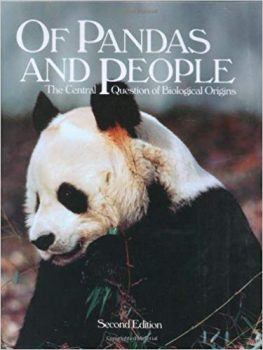 The first example, which he has been discussing for over twenty years, is the bacterial flagellum, a molecular rotor found in some bacteria including Salmonella, This, allegedly, is irreducibly complex, because it could not function unless all the parts were already in place. Behe discussed this in Darwin’s Black Box (1996), and defended his views on the subject at the 2005 Kitzmiller trial, which established that, legally speaking, Intelligent Design was a form of creationism. The judge was not impressed, commenting that Behe’s argument was an attempt “to exclude the phenomenon of exaptation by definitional fiat, ignoring as he does so abundant evidence which refutes his argument.” The alternative textbook that occasioned this trial, Of Pandas and People, had originally been written in terms of “creation science” rather than Intelligent Design, and Behe had contributed a section, on the alleged irreducible complexity of the blood clotting system, to the edition being considered by the court (shown here).
The first example, which he has been discussing for over twenty years, is the bacterial flagellum, a molecular rotor found in some bacteria including Salmonella, This, allegedly, is irreducibly complex, because it could not function unless all the parts were already in place. Behe discussed this in Darwin’s Black Box (1996), and defended his views on the subject at the 2005 Kitzmiller trial, which established that, legally speaking, Intelligent Design was a form of creationism. The judge was not impressed, commenting that Behe’s argument was an attempt “to exclude the phenomenon of exaptation by definitional fiat, ignoring as he does so abundant evidence which refutes his argument.” The alternative textbook that occasioned this trial, Of Pandas and People, had originally been written in terms of “creation science” rather than Intelligent Design, and Behe had contributed a section, on the alleged irreducible complexity of the blood clotting system, to the edition being considered by the court (shown here).
The bacterial flagellum surfaces again in the mendaciously mistitled Explore Evolution (2007). This is a creationist text written by Behe’s colleagues at the Discovery Institute, and aimed at schools , with the goal of presenting the arguments for evolution in such a way that they will not be believed [4].
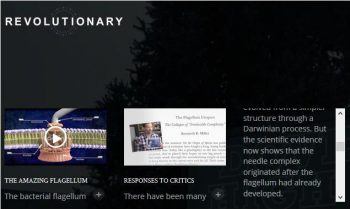
More recent articles in Nature Reviews of Microbiology and PLOS Genetics put the matter in perspective. There are probably thousands of distinct variants of “the” bacterial flagellum. Only half of the proteins typically present appear to be universally necessary, but the flagellum itself, and one particular kind of secretory pore, are so similar as to indicate common ancestry from simpler precursors. It had been thought at the time of Kitzmiller that the flagellum had evolved from the pore, but it now seems that it was the pore that had evolved from an earlier form of the flagellum. The Discovery Institute hails this as a vindication of Behe, but in doing so they miss the entire point. As the PLOS article puts it, “our work … demonstrates how molecular evolution can convert one complex molecular machine into a second, equally complex machine by successive deletions, innovations, and recruitment from other molecular systems.” Deletions, yes, but also innovations and recruitment. The last two of these are exactly the kind of thing that Behe would have us believe is impossible by natural processes. Again, we must ask what kind of non-natural processes he could possibly have in mind.
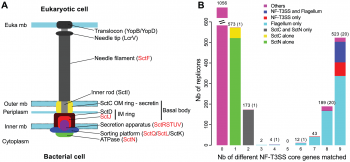
And now to return to Behe’s star example, the polar bear.
Behe cites a 2014 paper, which, he tells us, says that the adaptations that enable the polar bear to live in the Arctic are mainly deletions. As my friend Nathan Lents, another one of the reviewers for Science, explains in detail in his blog, this is not true.
Polar bears diverged from brown bears around 400,000 years ago, not very long before modern humans diverged from Neanderthals, and show a number of genetic differences. Most obviously, polar bears have undergone a genetic reduction in pigmentation, which is adaptive for purposes of camouflage in the high Arctic, where they live. This is, indeed, an example of adaptive loss of gene function, in accord with Behe’s claim.
No one would disagree with this. But there are many other changes. There are statistical tests for distinguishing between genes that are changing as a result of random drift, and those that are undergoing active selection. The researchers identified a total of 17 genes undergoing such selection. Of these, 7 were being selected for mutations that reduce their effectiveness, while the remaining 10 were being selected for mutations that enhanced it. Yet on the basis of these 7, Behe claims that his thesis has been vindicated.
It gets worse.
Generally speaking, each polar bear gene that has been altered, relative to other bears, shows several mutations, which will lead to several differences in the protein that it encodes for. If any one of these can be described as damaging function, Behe regards this as supporting his thesis, even if the cumulative effect of all the changes is improvement (he uses similar distortions in the 2010 review discussed much earlier). Even worse, Behe sometimes uses contorted analogies to claim that a gene has been damaged. Consider one extremely important gene, the one that is undergoing the second highest level of selection. This gene controls the formation of a protein, known as apoB, that is involved in cholesterol transport in the blood. It is not surprising that the gene has been modified, because polar bears need to consume huge amounts of seal blubber during the hunting season, in order to lay down their internal fat supplies for the winter fast.
Behe describes the changes as damaging. His evidence is that related changes in humans give rise to unhealthily high accumulations of cholesterol in the blood. But you are not a polar bear, and have not evolved to live on a polar bear’s diet. (For a more technical discussion by Lenski of the flaws in Behe’s analysis, see here.)
Compare Behe’s conclusion with what is actually in the paper. Four of the mutations to the gene under discussion affect only the internal structure of the protein for which this gene is responsible, meaning that they probably have little effect, while the other five all make the protein stickier, and thus more effective at transporting cholesterol. So it would seem that from the polar bear’s point of view, these changes are constructive improvements, and the authors of the papers say as much:
We suggest that the shift to a diet consisting predominantly of fatty acids in polar bears induced adaptive changes in APOB, which enabled the species to cope with high fatty acid intake by contributing to the effective clearance of cholesterol from the blood.
It is Behe’s science that is broken, not the polar bear.
1] This, even more strictly speaking, is “neo-Darwinism”, and refers to the “modern synthesis” that emerged along with population genetics in the first quarter of the last century. Darwin, of course, knew nothing of mutations. Present-day thinking is sometimes described as forming an “extended synthesis”. How different this is from the “modern synthesis” depends on who you ask.
2] This from the publisher’s description: “A sensational book that offers a view contrary to evolution theory: degeneration. Peter Scheele demonstrates using the present-day knowledge of DNA that changes in nature are not directed upward but downward and imply a loss of information… This book was so controversial that the first edition was sold out on the day it was released. A second and third edition followed quickly.”
3] There are other things going on as well, such as random drift, but selection is enough to be going on with.
4] For more technical discussion of Behe’s statistical arguments, see here, revised in the light of Behe’s own comments, here; the authors conclude that Behe overestimates the waiting time for a two-mutation change by 5 orders of magnitude, not, as they had originally claimed, 6.
5] It is worth noting by the way that he has retreated here from the position in his 2010 review, where he argued that the production of novelty by mutation was close to impossible.
6] To be fair, I would point out that Explore Evolution does give a reasoned account of the concept of exaptation, albeit one followed by a commentary intended to discredit it.
I thank Michael Fugate and Eddie Janssen for useful references. Falling tower: USAF via Evolution News. Mike Pence image Public Domain via Wikipedia. Polar bear mother and cub, Public Domain, Scott Schliebe via Wikipedia. Flagellum schematic from PLOS paper cited.
